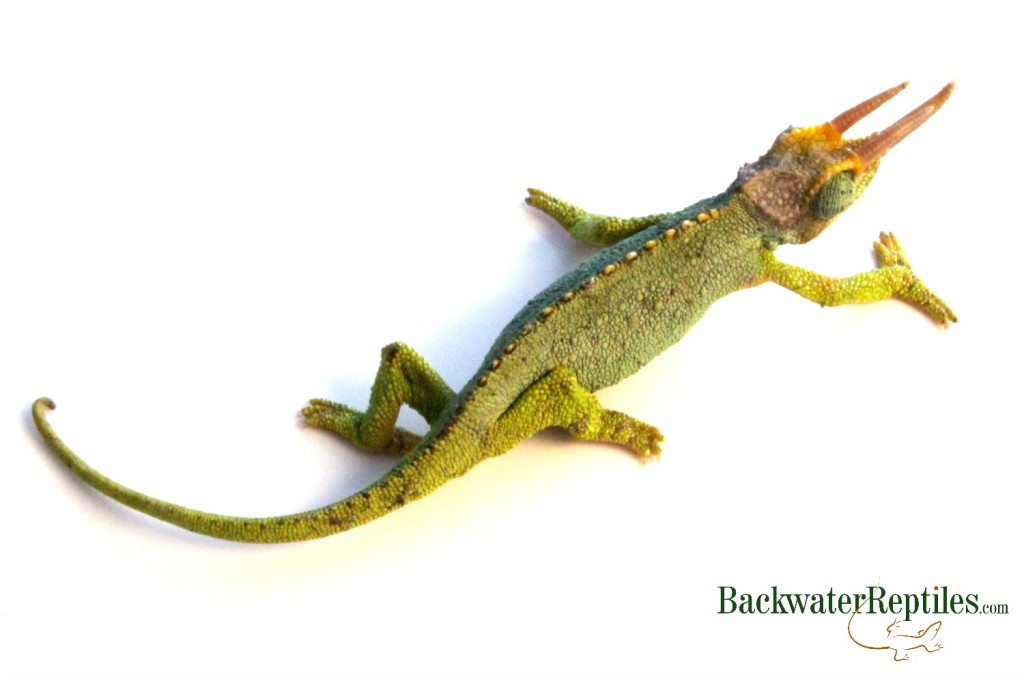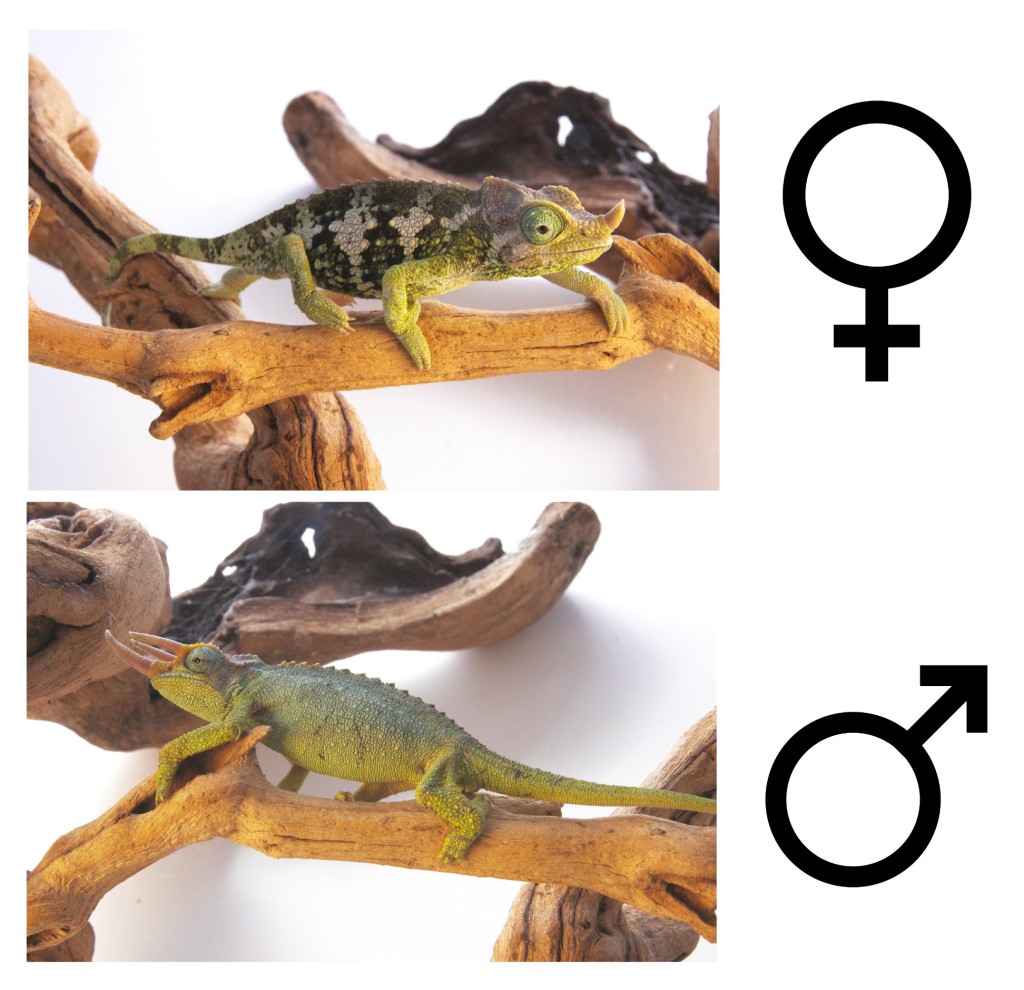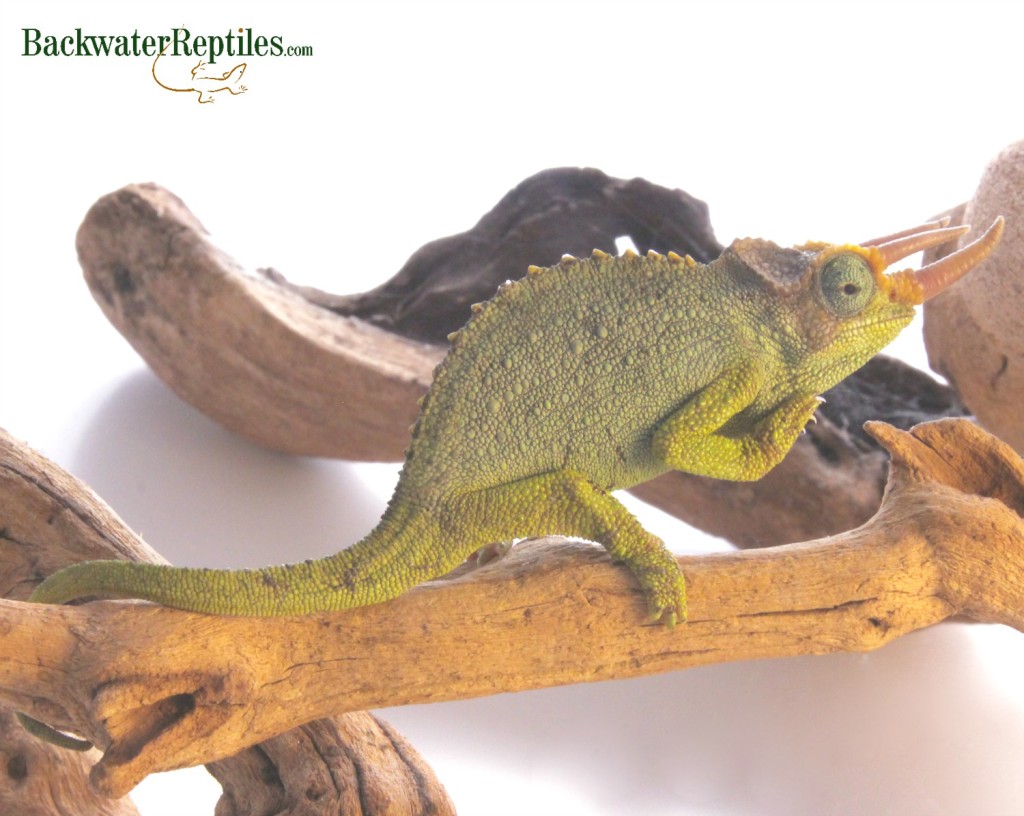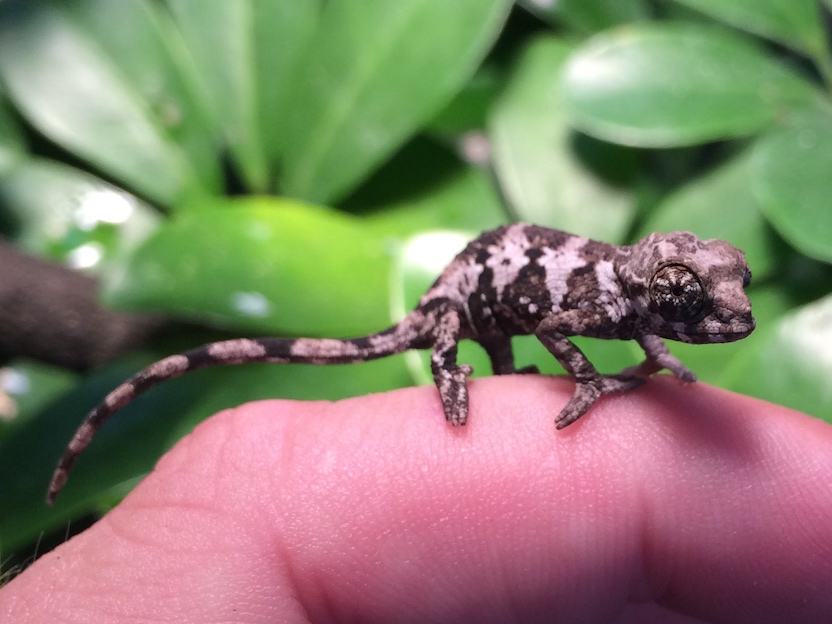From the get-go, in order to understand this blog article, you’ll need to know what the term “sexual dimorphism” means. The simplest way to explain it is that it describes a single, sexually reproducing animal where males and females look different from one another. A great example of an animal that is sexually dimorphic that all readers should be familiar with is the common chicken. Roosters are easily identifiable as the male of the species, while hens look completely different from them but are clearly still the same species.

There are many traits that exemplify sexual dimorphism in animals, the most obvious being different genitalia. However, because chameleons lack visible distinguishing sex organs, we have to examine their other physical traits in order to determine males from females.
Generally, with most reptiles and amphibians, the traits examined to determine gender are: size, ornamentation, and coloration.

This brings us to our question regarding Mt. Meru Jackson’s Chameleons – are they sexually dimorphic animals? Can you tell the males from the females just by looking at them?

In short, the answer is yes.
The main difference between males and females is the number of horns/spikes present on the animal’s head. Females possess one short horn on the tip of their nose, while males have a trio of horns, one on the tip of their nose and one above each eye like a triceratops.

Another less noticeable difference between the genders is size. Males will grow to be slightly larger than females in terms of body length, weight, and slightness of frame.
Both males and females can and will display a range of colors from dark, mottled browns and blacks to vibrant greens, so color is not necessarily a good indicator of gender in this species of chameleon.
Here’s one of our baby Mount Meru Jackson’s chameleons.
If you’re interested in purchasing your own male, female, or pair, Backwater Reptiles has both genders of Mt. Meru Jackson’s chameleons for sale.


